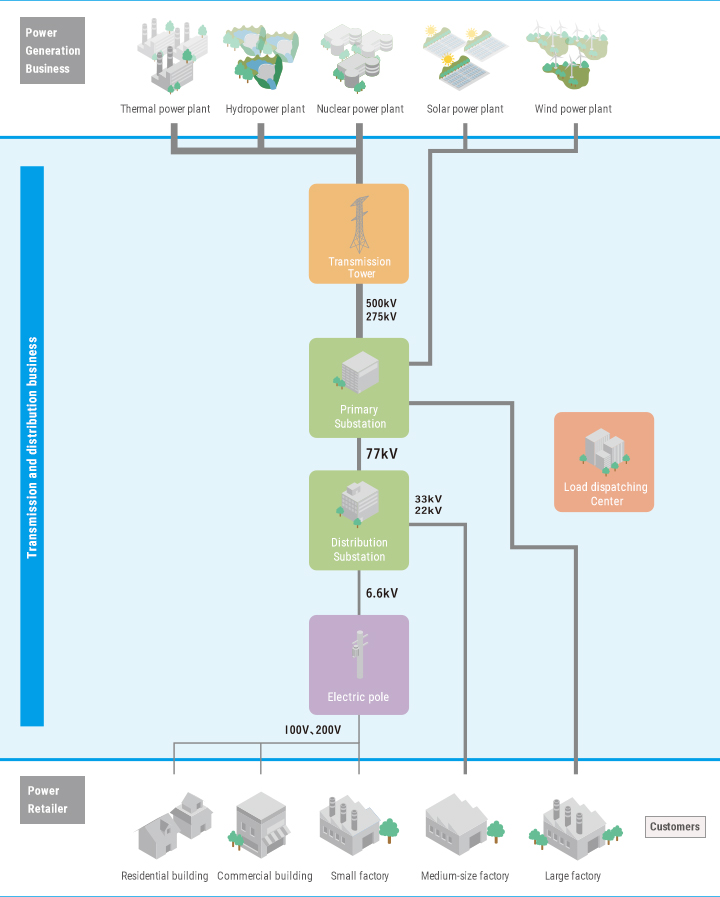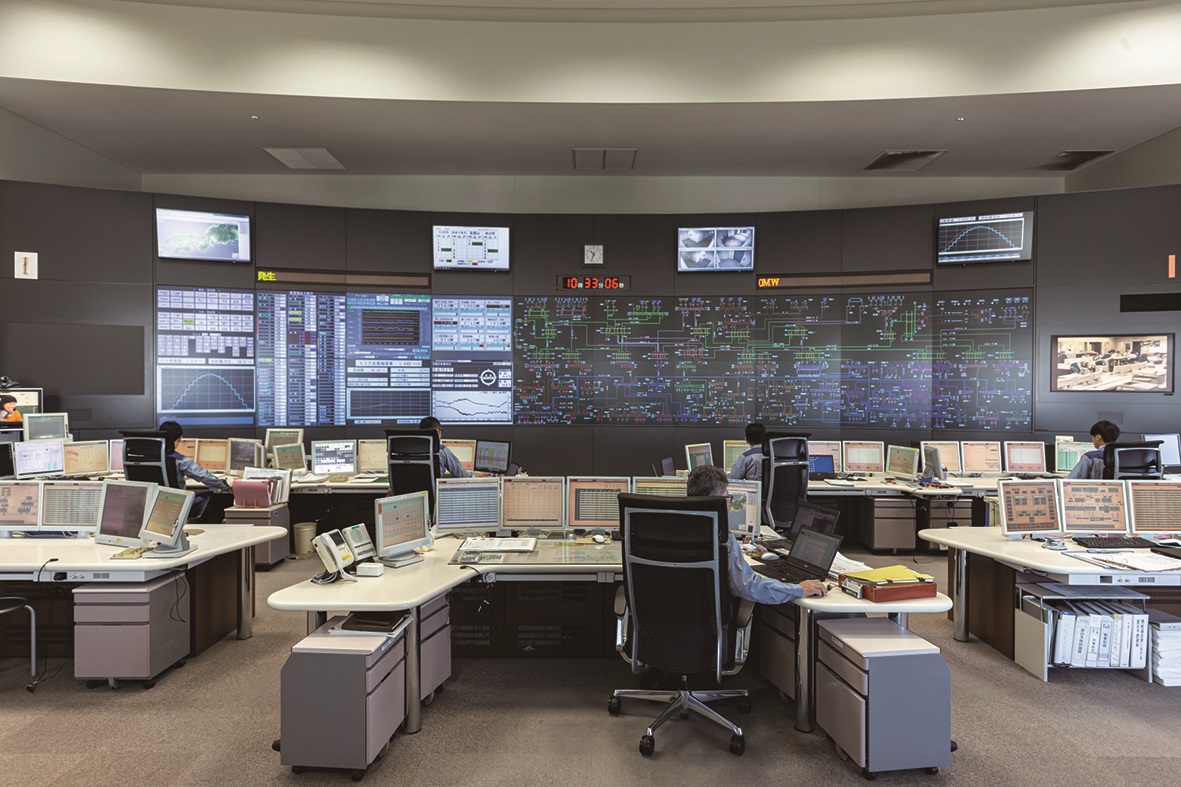Facilities to Ensure Stable Power Supply
Flow of Electricity
Electricity generated at power plants is delivered to customers via power facilities such as transmission lines, substations, and distribution lines.

Power Transmission Facilities
Transmission lines serve to connect power plants to substations, and substations to each other, in order to transmit electricity. In addition to overhead transmission lines suspended from steel towers or other constructions, underground transmission lines are also used, mainly in urban areas.

Substation Facilities
To reduce loss caused during power transmission, these facilities either convert electricity generated at power plants into higher voltages such as 275 kV or 500 kV, or convert higher voltages from transmission lines back into low voltages suitable for use by customers.

Power Distribution Facilities
These facilities deliver the electricity transmitted from power plants via transmission lines and substations to customers.Ordinary households are supplied with standard low voltages, while factories, office buildings and similar receive higher voltages depending on their scale of operations.

Load dispatching Facilities
Comprehensive control of the various facilities in the power system serves to ensure a stable supply of electricity to homes and factories etc., 24 hours a day, 365 days a year.

Safe and Stable Supply Menu

